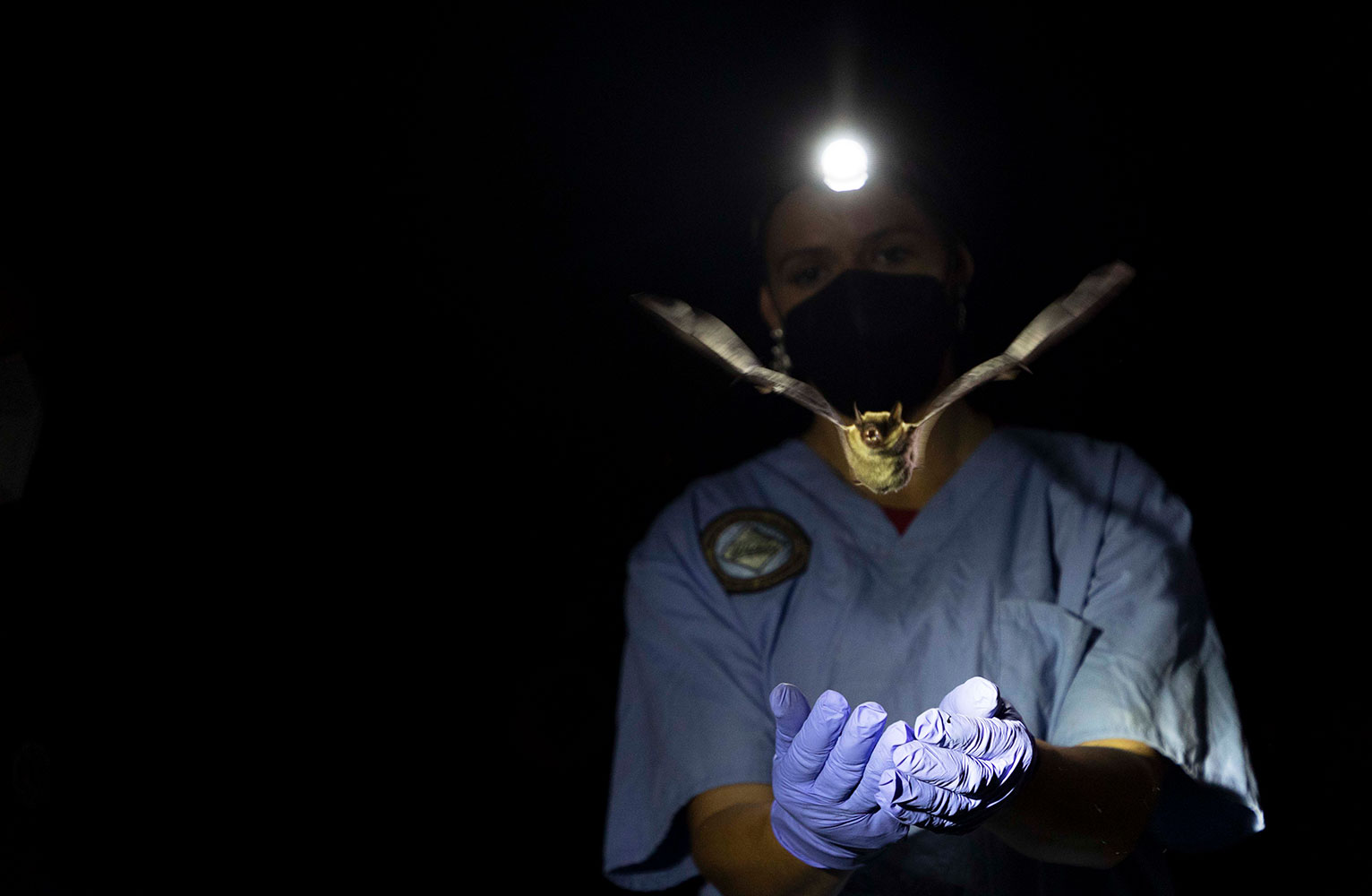
Rada Petric studies how human effects on the natural world can be mitigated to preserve animals in their natural habitats. (Photo by Andrew Russell, UNC Research)
Rada Petric, director of the UNC Institute for the Environment’s Highlands Field Site and assistant professor, on the importance of animal conservation
Rada Petric leads the Institute for the Environment’s BatPack program, which seeks to gather data that can be used in bat conservation. Since 2011, when the fungus Pseudogymnoascus destructans was brought over from Europe, some areas of North Carolina have lost 98% of their bat populations. This makes bats an important target for state conservation efforts.
The BatPack program uses a citizen science approach to study bats along the southern portion of the Appalachian Trail. Hikers camping along the trail will soon be able to borrow a fully-stocked backpack that includes all necessary camping gear plus ultrasonic recorders that can pick up nearby bat activity. The recorders will capture how many bats are in the area and how they are using the environment (for example, are they merely flying overhead or are they feeding in that area). This data will help inform policy and allow wildlife managers to prioritize which habitats should be designated for bat conservation.
Why is it important to track bats?
PETRIC: Despite misconceptions that bats are scary or dangerous, they are actually very beneficial to our ecosystems. All of the bat species found in North Carolina are insect-eating bats, so they play a huge role in pest control and balancing the ecosystem.
Bat populations are facing many serious environmental threats. We are losing millions of our bats every year to white-nose syndrome caused by the invasive fungus Pseudogymnoascus destructans as well as windmills, pesticide poisoning and urban expansion. As a result, among the state’s native bats, the northern long-eared bat was added to the federal endangered species list in 2022; tricolored bats are currently awaiting addition to the list; and the little brown bat is awaiting review for the list.
Through the BatPack program and other tracking efforts, we can gain a better understanding of which areas are most important for bats. This will allow us to prioritize places for conservation so that we can better protect our bat species.
The team is currently raising funds to purchase all necessary gear for the BatPack backpacks so that anyone who wants to participate in the project can do so, even if they don’t own camping gear.
As told to Audrey Smith ’10
Related Stories




